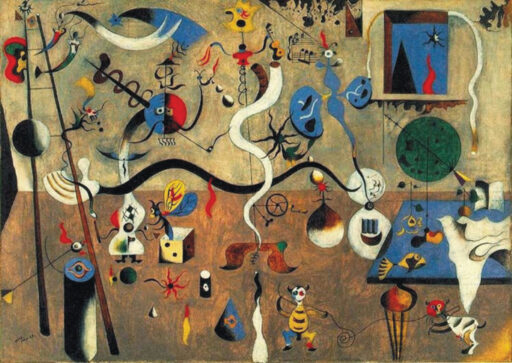‘I try to apply colors like words that shape poems, like notes
that shape music.’ – Joan Miró
Joan Miró passed through profound sadness in his youth. He always looked for some kind of tension in poetry, music, architecture and sounds in the environment, such as creaking of wooden cartwheels, footsteps, cries in the night, crtckets. Interestingly Miró saw life in every object be it a matchbox, cigarette or a book and thought that these objects contain a secret life much more intense than certain humans. He found a pebble on the beach more in motion than the people bathing there. These kind of movements that he considered endless, were translated on his canvases resembling sparks flying into space.
Join Miró considered his studio like a kitchen garden where like a gardener he pruned to permit the plants to grow. He believed in working with great patience and permitted the things to take a natural course. Grafting, watering and waiting for plant to give fruit and then watch the fruit ripe was a process that he allowed to happen to his creation on canvas. More than the form on the canvas it was the spark that it gave which compelled him to look at his piece of art again and again and enjoy it differently every time. In his words, ‘More than the picture itself what counts is what it throws off, what it exhales. It doesn’t matter if the picture is destroyed. Art can die, what matters is that it should have sown seeds on the earth. A picture must be fertile. It must give birth to a world’.
One can see this in Harlequin’s Carnival painted by him in 1924-25, every object in the painting is in a set motion and giving a rhythmic moment that does not permit the eye to rest at all.
According to Miró, you should be able to discover new things every time you see it. But you can look at a picture for a week and never think of it again. You can also look at a picture for a second and think of it all your life. That was Joan Miró whose paintings release sparks when you observe them.


